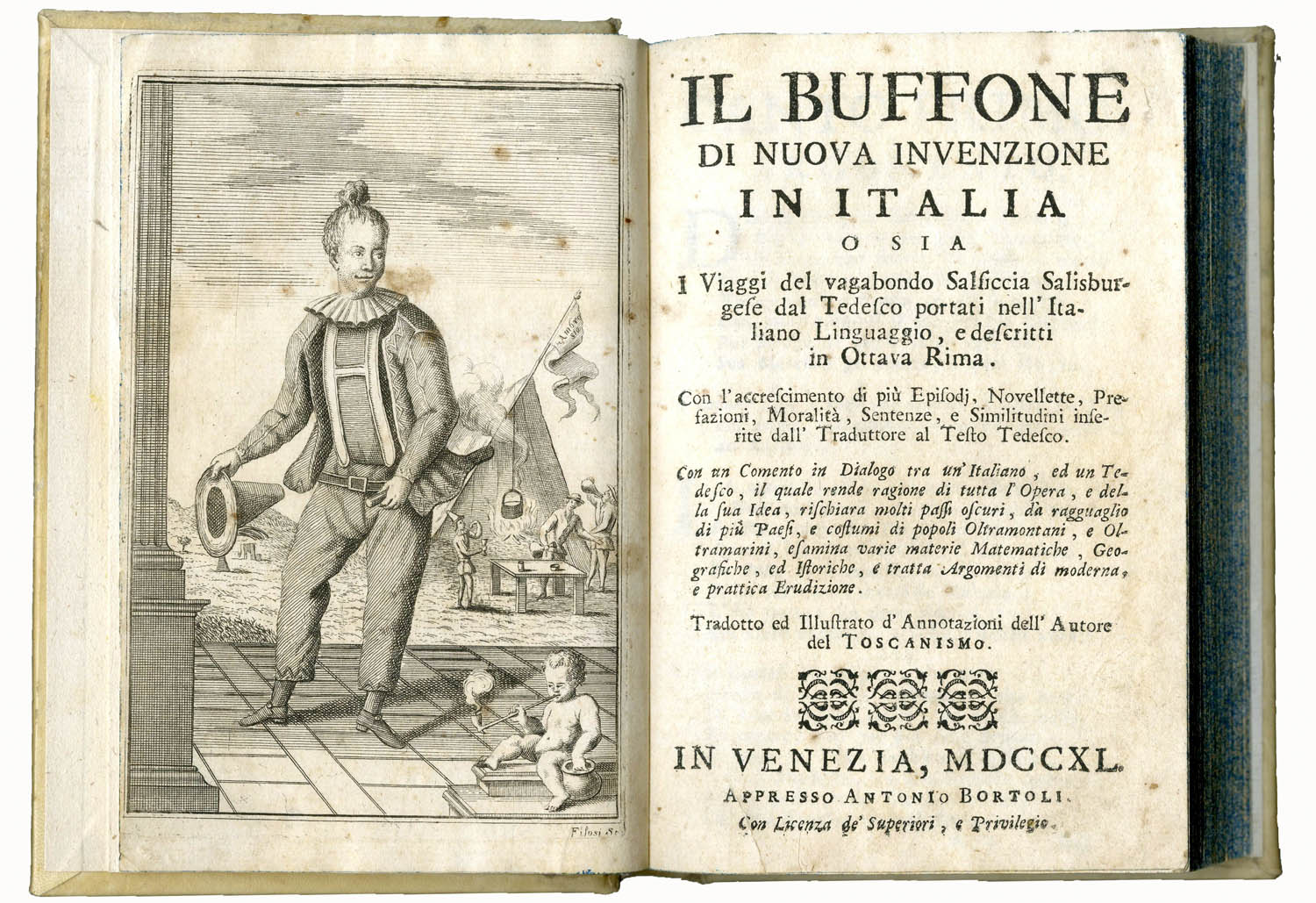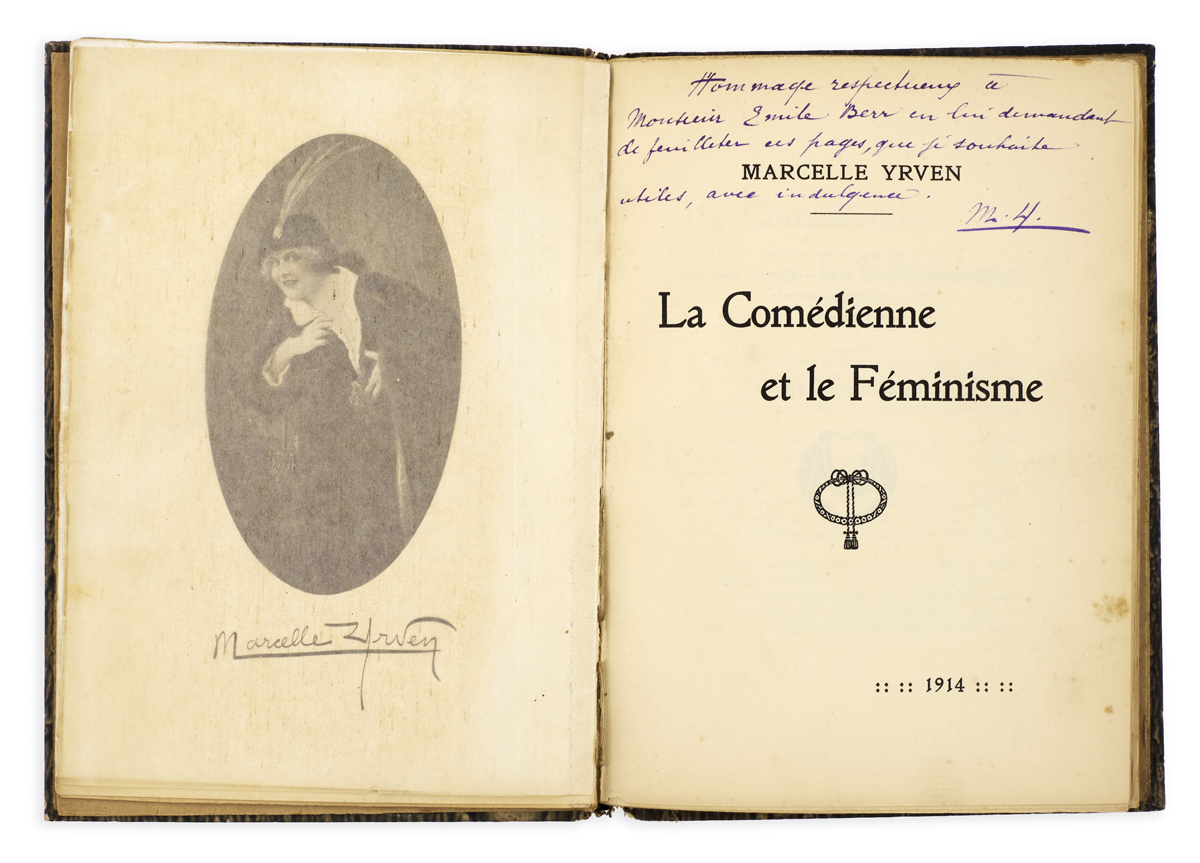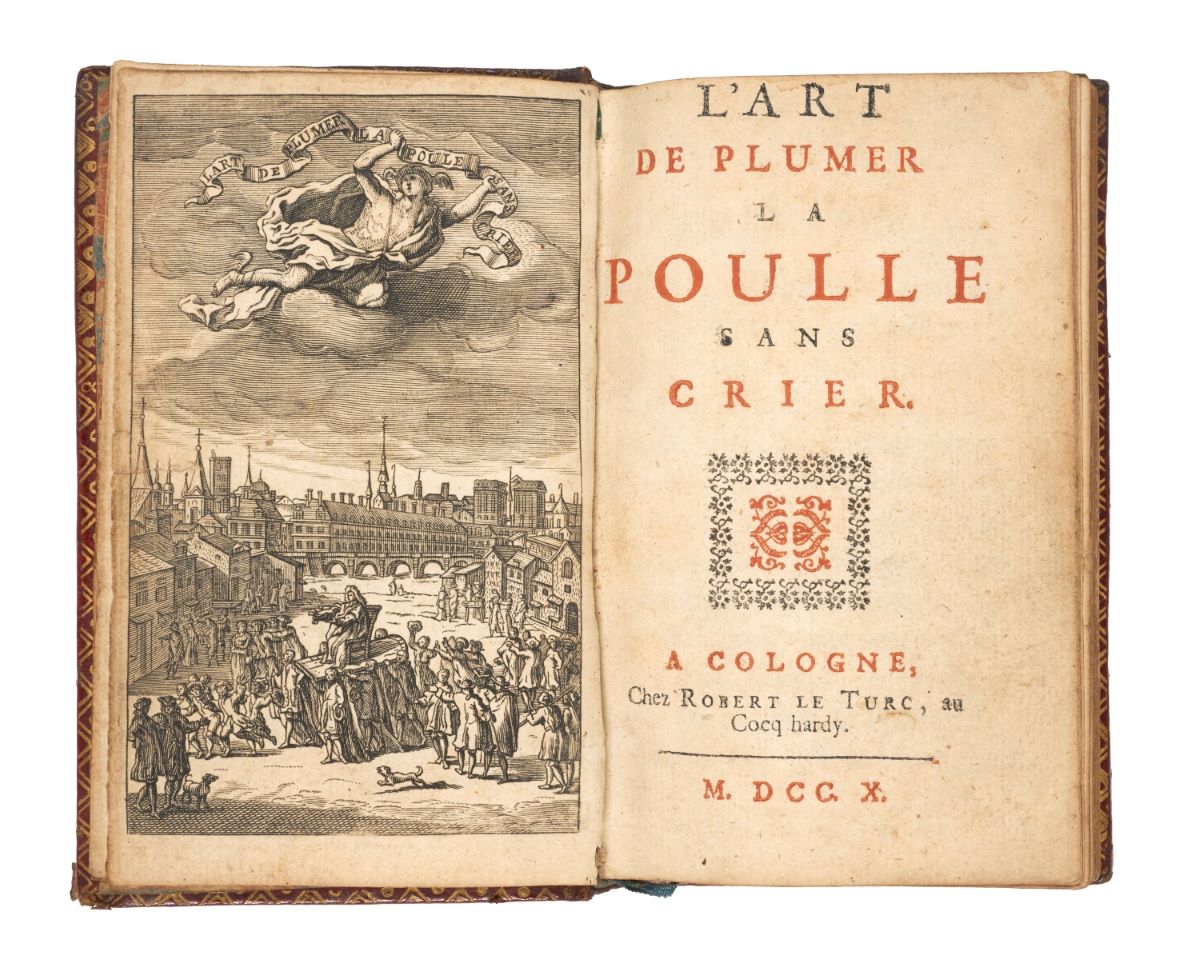

[ARIZZI, Francesco.]
Il buffone di nuova invenzione in Italia. O sia i viaggi del vagabondo Salsiccia Salisburgese […] con un comento in dialogo tra un’Italiano, ed un Tedesco, il quale rende ragione di tutta l’opera, e della sua idea, rischiara molti passi oscuri, dà ragguaglio di più Paesi, e costumi di popoli oltremontani, e oltramarini […].
Venice, Antonio Bortoli, 1740.
8vo, pp. 270, [2, blank]; engraved frontispiece by Giuseppe Filosi depicting a buffoon in a camp of vagabonds; margins a bit short, some scattered foxing, a short repaired marginal tear to title page, with no loss, but a good copy in early twentieth-century vellum, title direct-gilt to spine.

Added to your basket:
Il buffone di nuova invenzione in Italia. O sia i viaggi del vagabondo Salsiccia Salisburgese […] con un comento in dialogo tra un’Italiano, ed un Tedesco, il quale rende ragione di tutta l’opera, e della sua idea, rischiara molti passi oscuri, dà ragguaglio di più Paesi, e costumi di popoli oltremontani, e oltramarini […].
First and only edition of Arizzi’s adaptation of Gottfried Prehauser’s Wienerische Hannswurst nebst lustige Reyss-Beschreibung aus Salzburg in verschiedene Länder, published anonymously and for a long time wrongly attributed to Benedetto Marcello.
The work, in thirty canti, tells of the adventures of ‘Hanswurst’ (a sort of ‘John Sausage’, here ‘Salsiccia Salisburgese’), a peasant from Salzburg, and of his travels through Tyrol, Italy, Russia, Hungary, Turkey, Nederlands, Sweden and Lapland. The comedy character of ‘Hanswurst’, inspired by characters of the Italian Commedia dell’Arte, was first popularized by Joseph Anton Stranitzky (1676 – 1726) around 1717, and later by Gottfried Prehauser (1699 – 1769) when he succeeded the former as the leading Viennese comedian (taking over also Stranitzky’s literary property and therefore publishing the Wienerische Hannswurst as his own). ‘Hanswurst’ is ‘a half doltish half cunning partly stupid partly knowing enterprising and cowardly self-indulgent and merry fellow who in accordance with circumstances accentuated one or other of these characteristics’ (Pischel, The Home of the Puppet-Play, p. 22).
Arizzi (fl. 1695-1771) was a Barnabite, best known now for his Il Toscanismo e La Crusca of 1739 (also sometimes attributed to Marcello), a three act comedy satirising the Accademia della Crusca. Here, he augments the German original, which he has adapted into ottava rima, with a commentary in the form of a dialogue between an Italian and a German, reflecting both on the habits of foreigners and on various topics ranging from mathematics to geography.
Neue Deutsche Biographie, 25, pp. 473-475; Brunet, III, 1396; Olschki, Choix, 190: ‘Unique édition extrémement rare’. Only the British Library copy on COPAC, with OCLC recording North American copies at Harvard, Yale, Duke, and Pennsylvania.

